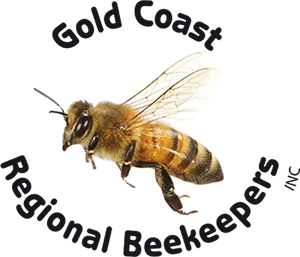
Bee & Bee Hive Pests
The following fact sheets and information were created by Plant Health Australia. See their website for more information:
AFB Glove Box Guide
American foulbrood (AFB) is a fatal microbial disease of honey bee brood caused by the spore forming bacterium Paenibacillus larvae. Read the following fact sheet for more on how to eliminate the American Foulbrood.
American Foulbrood
American foulbrood (AFB) is a fatal microbial disease of honey bee brood caused by the spore forming bacterium Paenibacillus larvae. Read the following fact sheet for more on how to eliminate the American Foulbrood.
Asian Honey Bee
The Asian honey bee (AHB), Apis cerana, is found throughout the tropical, sub-tropical and temperate zones of south-east and mainland Asia. Read the following fact sheet for more on the Asian honey bee.
Black Queen Cell Virus
Black queen cell virus (BQCV) is caused by the Black queen cell virus (Cripavirus). BQCV causes mortality in queen bee pupae. Read the following fact sheet for more on the Black queen cell virus.
Braula Fly
The braula fly lives in honey bee colonies where it feeds on nectar and pollen at the honey bee’s mouth and on material secreted by the host. Read the fact sheet for more on how to eliminate the Braula fly.
Chalkbrood Disease
Chalkbrood disease is caused by the fungus Ascosphaera apis. The fungus produces spores which are swallowed by bee larvae when they are fed by nurse bees. Read the fact sheet for more on Chalkbrood disease.
European Foulbrood
European foulbrood (EFB) is a brood disease caused by the bacterium Melissococcus plutonius. Read the following fact sheet for more on European foulbrood.
Drone Uncapping
In colonies with large brood nests, up to 85% of Varroa mites can be found within capped brood cells, with a preference for drone brood. Therefore, uncapping drone brood to examine pupae is an effective method for detection of Varroa mites.
Nosemosis
Nosemosis is caused by two species of microsporidian parasites (a type of spore forming fungus) called Nosema apis and Nosema ceranae. Both can infect worker bees, queen bees and drones.
Greater and Lesser Wax Moth
The greater wax moth and the lesser wax moth are pests of active hives, however they mostly cause damage to unattended combs in storage. Read the following fact sheet for more on Greater and lesser wax moth.
Sacbrood Virus
Sacbrood virus is caused by the Sacbrood virus (Iflavirus) which affects worker bee larvae thought to be infected by consuming contaminated water, pollen or nectar. Read the following fact sheet for more on Sacbrood virus.
Small Hive Beetle
Small hive beetle is a small brown-black beetle with clubbed antennae. The larvae of SHB cause the majority of damage to honey bees by burrowing into combs, eating brood, honey and pollen. Read the following fact sheet for more on SHB.
Tropilaelaps Mites
Tropilaelaps mites are native to Asia and parasitise the brood of the giant honey bees of Asia. Read the following fact sheet for more on Tropilaelaps mites.
Tracheal Mite
Tracheal mite (Acarapis woodi) is a microscopic, white coloured, internal mite of the honey bee respiratory system, capable of infecting queen bees, drones and worker bees. Read the following fact sheet for more on the Tracheal mite.
Varroa Mites
Varroa mites are external parasites of adult honey bees, and drone and worker bee brood. Read the following fact sheet for more on Varroa mites.














